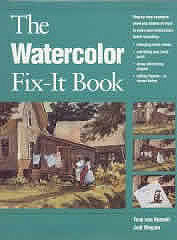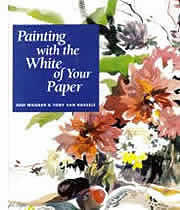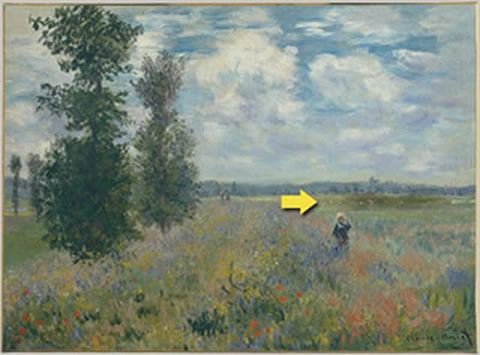Silhouettes and shapes
and the ambiguous dab of paint
If it quacks like a cow
After studying a landscape painting at a museum, I was surprised to see that the cows in the field were not really cows, but just little dabs of paint. From a few feet away, they looked like cows because this was a meadow--therefore they had to be cows.
If the dabs had been on a pond, they would have been ducks. And if they had been on a beach, they could have been sunbathers. Put them on a leash, and they're dogs.
Shape depends on context
Take a shape, particularly an ambiguous shape, and you can turn it into almost anything. That's the beauty--and the danger--of ambiguous shapes.
In the last episode, I mentioned this rule: If the viewer can't tell what it is, then don't put it in the picture.
This may not always be true. In spite of your best efforts, a vague shape in a painting will always be interpreted based on the rest of the picture. So you have to consider context when you paint. Here are some examples:
The ducks on the water are just little dabs of paint, but we know what they are.

Here, the car (or truck) on the street is just another dab of paint.

This woman is looking at grazing livestock in the valley below. Again, they're just little dabs of paint.

In this poppy field (by Monet), you can see some cows or sheep grazing in the background.
The truth
Just to show you that it's all about context, each of these background elements was lifted from the picture at the top. They're all ducks! But if we put them in a different environment, they can be whatever we want. They're just ambiguous shapes.
Let the viewer figure it out.
copyright James Stephens
All rights reserved
More art books and other things from Amazon. Just click this link:





